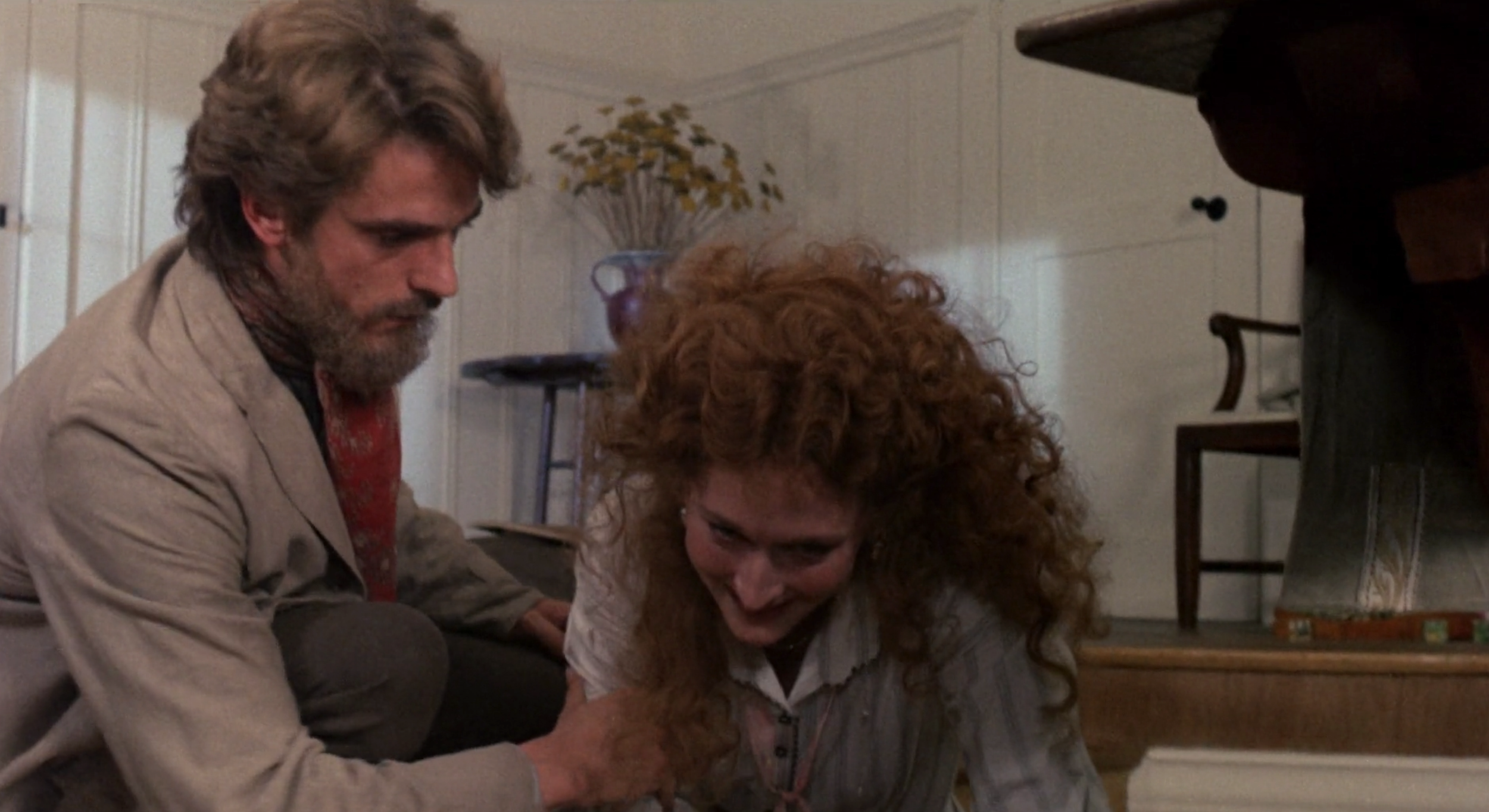Before we close the book on our big 1981 event we thought we'd discuss a few of the leading ladies of the year. Please welcome guest contributor Gabriel Mayora !

In 1981, Meryl Streep was a breakout star, a buzzy and reputable theater actress who in only four years since making the transition from Broadway to Hollywood had garnered an Emmy for a hit miniseries and two back-to-back Best Supporting Actress Oscar nominations in ’78 and ’79 (both for Best Picture winners), winning the second time. It was time for her to turn into a full-fledged leading lady. Enter Karel Reisz’s The French Lieutenant’s Woman, the film that marks Streep’s first Best Actress nomination. Over the decades, this performance has gained a reputation for belonging in the “overrated” category. Was this nomination more of a symbolic gesture to solidify her status as Hollywood’s new leading star or appreciation of the performance itself?
A key scene in the last 10 minutes of the movie makes a convincing argument for why voters would have felt genuinely compelled to single out Streep’s dual turn among the top five lead performances of 1981...
The French Lieutenant’s Woman is a cinematic adaptation of the 1969 novel by John Fowles, a postmodern—and deeply literary—deconstruction of the tragic, destitute heroine figure reflective of the moralistic representation of independent women in classic Victorian fiction. Fowles’ conceit consists of disrupting the novel’s plot to provide his own commentary. In adapting the novel for the screen, famed playwright Harold Pinter’s screenplay reimagines the source material’s main narrative as a film-within-a-film about the socially reprehensible love affair between the mysterious outcast Sarah (Meryl Streep) and Charles (Jeremy Irons), the high-society man who becomes infatuated with her. Pinter then adds a parallel framestory about the two lead actors, Anna and Mike, who have a run-of-the-mill affair while shooting the film on location.
Streep’s performance is a balancing act that calls for her to play the role of Sarah as performed by Anna, an actress who spends her time offset researching her character and running lines with the costar with whom she is having an illicit, yet dull, affair. And if this balancing act is more successful in some scenes than others, it more than pays off at the end of the movie in a single scene where Streep manages to bring the entire performance together, raising the quality and rewatch value of the film along the way.

Set three years after Sarah disappears without notice, the scene begins with Irons’ Charles arriving at a house by the seaside where he finds the formerly destitute Sarah. Charles angrily accuses Sarah of ruining his life as she pleads for him to understand that she could only be his partner once she found the sense of independence she now enjoys (it is hard not to think of Joanna Kramer when listening to Streep’s Sarah explain the importance of a woman becoming fully realized before she can tend to the demands of romance or domesticity). When Charles heads toward the door to leave Sarah behind for good, she grabs his arm to stop him, but he pushes her away. Sarah falls and hits her head against a wooden table. When she tries to get up, she slips once again.
What happens next is one of the great acting moments of Streep’s career. Upon the second fall, Streep, facing the camera, lets out a sly smile that transforms into a gentle giggle. For the first time in the film-within-the-film, Anna breaks character, and it is phenomenal. When Irons’ character rushes to help her, the two share a laugh. Anna pauses for a moment, looks into Mike’s concerned eyes and without a single word reassures him that she is okay to continue the scene. And they do.

Pinter’s screenplay feebly attempts to draw parallels between Sarah and Anna throughout the entire film. Yet, it is Streep who, through an inspired choice, finally forges a connection between these two women. Even more impressive is the way Streep uses this moment of spontaneity—the subtle smile, the soft laughter, the look into Irons’ eyes that says “I’m okay, let’s keep going”—to signal her seamless transformation from Sarah to Anna. After this brief moment, the actress (Streep but also Anna) remains committed to finishing the scene, fixing a few strands of hair on her wig and rubbing the side of her head, but flawlessly delivering Sarah’s last few lines of dialogue.
The shift we see in the middle of this scene incites a disruption more truthful to Fowles’ prose than Pinter or Railz are able to realize elsewhere in the movie. For Streep, this acting choice becomes an essential tool to show us a side of Anna we have not yet seen—a vulnerability, awkwardness, and humor that both grounds and deepens the character. Even the silent exchange between Mike and Anna tells us more about their relationship than any dialogue scene that came before.

In a 2015 documentary about the making of The French Lieutenant’s Woman produced for the film’s well-deserved addition to the Criterion collection, Meryl Streep mentions how Mike Nichols—the auteur with whom she is most associated and who directed some of her finest work—told her he knew he wanted to work with her as soon as he saw this scene. It is the kind of acting choice that signals the arrival of a new leading star, one whose intellectual approach to acting is as equally matched by her surprising spontaneity and her ability to bring an entire film together in a single moment.
More from our 1981 retrospective
- The 1981 Supporting Actress Smackdown
- Katharine Hepburn's fourth Oscar
- Kathleen Turner's sizzling debut in Body Heat
- Harrison Ford in Raiders of the Lost Ark
- Jessica Harper in Pennies From Heaven
- Marilia Pera in Pixote
- Only When I Laugh and the Razzies
- Kathryn Harrold in Modern Romance
- Vintage: Pop Culture in 1981
- Vintage: Sexiest People Born in 1981